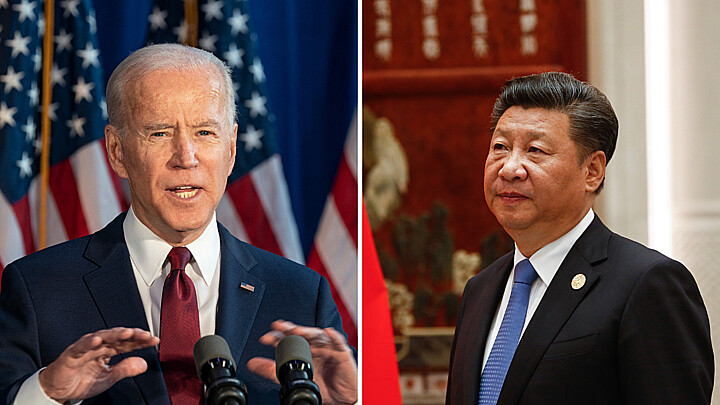Business
Mexico replaces China as America's top trading partner as U.S. continues 'nearshoring' shift
Part of Mexico’s rise as America’s top trading partner is due to its manufacturing sector, particularly the auto industry, which accounts for almost a quarter of the manufacturing trade

July 13, 2023 8:59am
Updated: July 13, 2023 9:29am
Mexico became America’s top trading partner this year, replacing China amid growing tensions with the Asian country, according to the Federal Reserve Bank of Dallas.
In 2023, Mexico rose to become America's largest trading partner, reaching a total bilateral trade of $263 billion during the first four months of the year. Mexico represented 15.4% of all goods exported and imported by the U.S., followed by Canada with 15.2%, and then China with 12%.
"Today’s global economic relationships encompass a myriad of concerns, among them national security, climate policy, and supply-chain resiliency," writes Luis Torres, senior business economist at the Dallas Fed in a statement.
The news reflects a significant shift in global economic dynamics, which is moving from prioritizing low prices and efficiency to something more stable and closer to home.
That shift, known commonly as "nearshoring" has become a U.S. strategic priority pushed by U.S. congressional leaders.
On April 17, 2022 ADN America published an oped by Rep. Mark Green about the Western Hemisphere Nearshoring Act, a bipartisan bill he co-sponsored with Rep. Michael McFaul to return manufacturing from China to Latin America to improve the regional economy and decrease reliance on Beijing.
"This bill would create a low-interest loan program through the International Development Finance Corporation, with financing provided by existing tariffs on Chinese goods, to provide an incentive for companies to relocate their factories from China to Latin America," Green wrote.
Two weeks before Green's oped, ADN reported that Mattel spent about a billion pesos to shift its operations from China to Mexico with a 200,000 square meter plant only 140 miles from the U.S. border.
China became the nation’s top trading partner in 2014, surpassing Canada. However, trade with the Asian giant began to decline during the Trump administration, after high tariffs were imposed on Chinese imports.
The Biden administration left the tariffs in place, with the average U.S. tariff on Chinese products being 19.3%, according to the World Trade Organization. Mexico, on the other hand, has very few barriers to trade with the U.S. due to a free trade agreement negotiated in 2020 between the two countries and Canada.
Part of Mexico’s rise as America’s top trading partner is due to its manufacturing sector, particularly the auto industry, which accounts for almost a quarter of the manufacturing trade between the U.S. and Mexico. Total trade of manufactured goods between Mexico and the U.S. reached $234.2 billion.
The decline of China as the nation’s top trading partner also reflects the worsening relations between Washington and Beijing, despite efforts by the Biden administration to ease tensions between the two countries.
Last week, U.S. Treasury Secretary Janet Yellen traveled to Beijing, making her the second high-ranking official to visit China in recent weeks.
"The revival of manufacturing in Latin America would be a major win for both the United States and our southern neighbors," Green wrote in his oped.
"This is an excellent opportunity to partner with governments and private investors to create economic growth and stability in Latin America. It makes supply chains less vulnerable to China, promotes development in the region, and will ultimately help address the factors driving unprecedented levels of migration to the United States southern border.
"The flow of private investment, along with strengthening the rule of law and security of private property, is the key to addressing the lack of economic opportunity in many Latin American countries."










